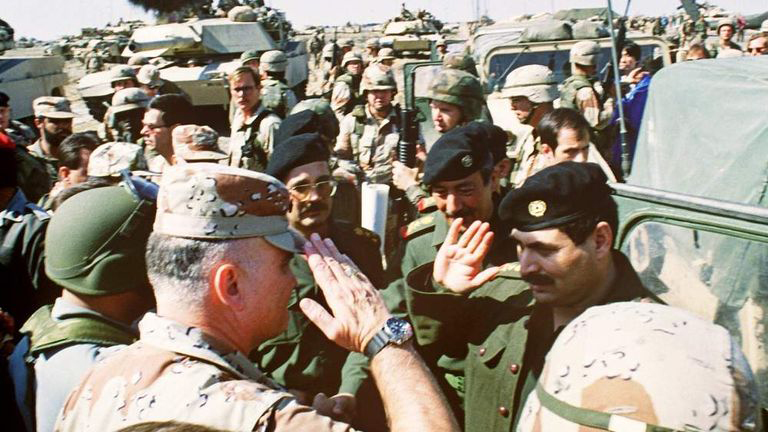

Limited War – a Cure for Counter-Insurgency?
But if we didn’t do counter-insurgency, what would we do?
‘Unwanted, un-winnable and un-American’[1], limited war theory is today resiled by the very Western militaries who gave birth to it. Despite being waged successfully by many nations out of necessity and strategic choice, the question remains whether successful limited war is possible—a question both prospective and retrospective.
Successful limited war is not only possible, it also presents an alternative to the current trend towards unlimited counter-insurgency (COIN). But like all military strategies, there are a few rules that help.


In fact there are three rule (tenets) that are necessary for a successful limited war:
1. Precision of intent.
Precise intent requires suitable objectives and their clear communication to other actors.
2. Governing constraints.
Belligerents should establish governing constraints that act as automatic stabilisers to prevent escalation.
3. Risk and resolution management.
You have to match objectives to military capability and act with economy and proportionality to mitigate the risk of over-commitment. And to resolve a conflict, actors must tolerate unclear, even unfavourable, outcomes. To be successful, these tenets need to be integrated into military training, doctrine and operational plans. History has shown that the comprehension and application of these tenets are essential components of successful limited war.
Limited War (i.e. limited objectives) may also present an alternative to the current doctrine of Counter-Insurgency which prescribes unlimited objectives and limited means.
Limited war entered the modern strategic lexicon in 1957, courtesy of Robert Osgood and Henry Kissinger, in response to the shortcomings of the first US Cold War strategy: ‘massive retaliation’.[2] Immediately after World War II, the US relied on its superior nuclear arsenal for much of its defence policy. The Berlin Blockade and the Korean War, however, revealed scenarios in which the West could be required to engage in conflict below the threshold for the employment of nuclear weapons.[8] To fill this strategic void, Kissinger and Osgood championed a doctrine of war, limited by objectives, which would allow opposition to communist expansion while avoiding superpower conflict and the concomitant risk of nuclear war.
So where did it all go wrong?
This theory was accepted, if not embraced, until the Vietnam War, a war waged by ‘limited means rather than ends [and] often characterized what American policymakers view as “limited war”’.[9] This misapprehension led many practitioners to reject limited war as a meaningful strategic decision. Neither means nor physical boundaries, but the scope of political objectives, distinguish limited from unlimited war. Both Osgood and Kissinger emphasised this distinction when they promulgated their theories.[10] Where and how combatants fight is ultimately determined by why they fight.
Unfortunately, this confusion has led to the neglect of limited war theory since the conclusion of the Cold War.[11] Understanding limited war’s provenance reveals political objectives as its determinant element and provides a clear lens through which to interpret its practice.
Precise Intent
Objectives must be selected carefully and communicated clearly. Limited war is politically deliberate and objectively dependent; hence, governments must set specific, measurable and achievable objectives. However, not all objectives are equal.
Patricia Sullivan’s analysis of all military interventions by all United Nations (UN) Security Council members between 1945 and 2001 found that certain war aims were more likely to be successful than others.[12] Such tasks usually involve the specific application of force such as expulsion, recovery and destruction.
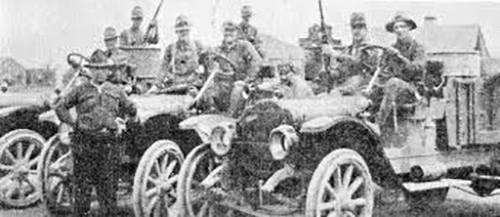

The Indian Army successfully expelled Pakistani forces from East Pakistan in 1971 and annexed Goa from Portugal in 1961.[13]Britain successfully recovered the Falkland Islands from Argentina in 73 days. The US Army made great use of punitive expeditions in various confrontations with Mexico.
Unlike ‘brute force’ objectives, coercive aims have a much lower correlation with success. Coercive operations seek to compel or deter an adversary. Compellence is largely a retroactive endeavour, seeking to change an adversary’s behaviour or cease an ongoing action. Deterrence prevents an action from occurring in the future. The largest body of coercive operations, particularly compellence, are related to peace enforcement and peacekeeping. Sullivan’s analysis further supports the Brahimi Report findings that peace operations had a far lower probability of success than aims limited to direct military action.[15] Although deterrent activities have a slightly higher correlation with success, they engender their own problems and risk open-ended commitments.
This disparity between the success of ‘brute force’ objectives and the less successful coercive goals of compellence and deterrence is due to a number of factors:
1. The success of the former is easier to measure, such as the expulsion of occupying forces from a territory or the destruction of a weapons plant. It is much harder to measure a change of behaviour, thinking or intention.
2. Application of force operations largely remove time as a limiting factor. Coercive or deterrent action may represent an unlimited liability or open-ended commitment. In the Korean War, the United Nations Command’s specific war aims, expelling communist forces and recovering lost territory, were achieved within 13 months, but the deterrent function still continues.[16] The results of Sullivan’s analysis hold true regardless of the degree of asymmetry.[17]
Powers that seek objectives with a definable military end state are less likely to underestimate the cost of success than those seeking compliance through coercion, where the costs are harder to calculate.[18] In the former, an opponent’s resolve can be reasonably calculated. In coercion, military intervention is likely to increase the resolve of even a politically weak target. The right objectives make success more likely, but precision of intent requires objectives that are not only clear, but also clearly understood.
Precise Intent is an intent which is understood.
In limited war, adversaries must understand what is expected of them while domestic audiences must be conditioned to a war with limits— requirements that the US government had to address in preparing to liberate Kuwait in 1990–1991. Conscious of the anti-Korean War slogan ‘why die for a tie’, the Bush administration sought to ensure that the population understood its limited aims: there would be no march into Baghdad.[19], [20] The communication of war aims to the adversary is as important as domestic support. Although the US failed to convince President Hussein of its willingness to use force to liberate Kuwait, once the conflict began he was assured that his regime’s survival was not at stake.[21] While the US publicly offered support to various Iraqi dissident groups, they privately ensured Hussein understood that their limited war aims provided him with options.[22] Had Hussein believed the coalition objectives were unlimited and his survival was at stake, he may have responded very differently.[23]
However, communicating war aims does not mean surrendering the initiative. Israel did not convey its objectives until after hostilities commenced in the Six-Day War. Immediately after achieving its military objectives, Israel achieved its aims via a signed ceasefire with Egypt, Syria and Jordan on the sixth day of the conflict, followed by a UN resolution.[24] In communicating objectives, combatants establish implicit rules, which are essential to prevent the escalation of the conflict— the second tenet of limited war.


It may seem axiomatic that a limited war must have limitations. However, limited war has an inherent risk of escalation where the conflict exceeds the original objectives. In a cost-benefit calculus, such escalation can lead to an unsuccessful limited war, regardless of tactical success. Governing constraints can mitigate such failure. Constraints can be implicit or explicit, but they must be clear to the nation initiating limited war and should be established before hostilities commence. Such constraints include nuclear nullity, avoidance of superpower confrontation, geographic designation, limited military mobilisation and limits of legitimacy imposed by the international community.[25] India exploited these limits with great success in the Bangladeshi War of Independence in 1971.
Limiting a limited war with… limits
On December 3, 1971, Pakistan, concerned about possible Indian intervention in the bitter counterinsurgency in East Pakistan, launched a pre-emptive air strike on Indian air bases.[26] India’s response is a model for the tenets of successful limited war. The Indian government set a clear and militarily precise war aim: the liberation of East Pakistan. They repeatedly communicated this aim to domestic and foreign audiences, in the process establishing implicit rules for the conflict. India declared there would be no retaliatory invasion of West Pakistan, hence ruling out an existential threat to the West Pakistani state. By limiting its actions, India stayed below the perceived threshold of third-party intervention, thus minimising the risk of superpower confrontation.[27] India also understood that the People’s Republic of China (PRC) had a lower threshold for military action than the other major powers. Consequently, India pre-positioned eight infantry divisions at the disputed Sino-Indian border along with significant ground-based air defence. These forces, suited for defence rather than offence, ensured India’s declaratory policy matched its action policy, thus denying the PRC a casus beli for intervention. India set specific geographic boundaries for the war, limiting its offensive action to the air, sea and coastal waters of East Pakistan. While the Eastern Fleet of the Pakistani Navy was destroyed, India limited its actions in the west to an aggressive blockade. [28] In response to Pakistan’s increasingly desperate attempts to divert Indian resources from the east, India limited its counteroffensives and air strikes to disputed territories in the border region.[29] Indian forces completed military operations in East Pakistan within 13 days.
Owing much to its narrow objectives and rapid military success, India avoided pressure from the international community and maintained legitimacy. On December 12, the US sought to censure India at an emergency meeting of the UN Security Council, by the time Pakistan’s Deputy Prime Minister Zulfikar Ali Bhutto rose to address the General Assembly four days later, Pakistani forces had surrendered. India failed to assimilate the lessons of its success; three y
ears later, it became a nuclear power and shifted its defence policy to one of unlimited response: the ‘Sundarrajan Doctrine’.[30]India would discover the limits of unlimited war when confronted with a direct attack on its own soil.l, but
On December 18,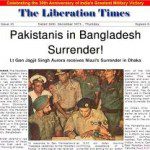

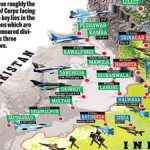

Operation Parakram failed for a number of reasons. Lacking clear objectives, military planners were unable to respond proportionately. Without implicit rules, it posed an existential threat to Pakistan and raised the spectre of a nuclear response, which worried the international community. These fears were aggravated by the unconstrained mass mobilisation of India’s armed forces. Because of cumbersome forces, unclear objectives, poor strategic communication and failure to establish governing constraints, India lost international support and legitimacy and was forced to halt the war before it even began. The stark contrast between India’s intervention in Bangladesh and Operation Parakram demonstrate the necessity of precise intent and governing constraints. Both conditions, however, depend on a final, critical tenet: the ability to win, or at least resolve, a limited war.
Precision of intent and governing constraints alone do not guarantee success in limited war; combatants must manage risk and gain resolution. To minimise risk, combatants must match objectives to capability, act with economy and proportionality and avoid decisive commitment. Resolution requires a forum for negotiation and tolerance of uncertain outcomes. The risk of over-commitment can result from an inability to connect military plans with political objectives, as Iraq was to discover in the Iran-Iraq war.[35]
Risk Management – can you win?
Saddam Hussein sought to exploit Iranian chaos in the wake of the 1979 Islamic Revolution, with a cross-border incursion by Iraqi forces to assert an ancient claim over the Shatt al-Arab waterway.[36] Although the conflict became an unlimited war of attrition, evidence shows Hussein had limited political objectives and established a number of constraints. Neither side possessed nuclear weapons, and superpower confrontation was unlikely for various reasons.[37]
Iraq limited its military mobilisation and committed only three divisions to the attack. Further limitations were imposed by the lack of deep air-strike capability on either side.[38] Iraq also limited its objectives geographically in the hope that, in its state of chaos, Iran would be prepared to negotiate for the loss of territory. This approach was manifested through a bite-and-hold strategy; Iraqi forces advanced to a limit of exploitation and established defensive positions under an air defence umbrella.[39]
However, Iraq underestimated Iranian military capability and public resolve. Although Iraqi forces were technologically superior, Iran had a significantly larger population base. Iran conducted an emergency mass mobilisation and committed unexpectedly large forces against the Iraqi positions. Iraq had no contingency plan and was forced to fall back into its own territory. The moment Iranian forces entered Iraq, both sides became decisively committed. There could be no negotiated settlement while Iranian forces were at the gates of Basra.[40]


In its haste and disorganisation, Iran’s response failed to establish limits or consider its ability to achieve resolution. Its technological and financial inferiority caused extreme casualties during its counterattack.[41] The thousands of casualties at the Battle of Dezful saw both sides decisively committed and evenly balanced with no means of resolution. The Iraqi regime had miscalculated the resources it required to win against Iran, a failure that Iran had reciprocated.
Iraq’s limited war failed because of its inability to connect military capabilities with its political objectives. Subsequently, both sides found themselves escalating the conflict and decisively engaged due to the vicious cycle of disproportional commitment. As losses increased, the more military victory at any cost overshadowed political objectives. Even if the risks associated with capability, proportionality and decisive engagement have been managed, belligerents must also be able to achieve resolution. This requires a forum in which to negotiate or encounter the scenario that the UN Command faced in Korea.
Resolution Management – so what do we do now?
The Korean peace, not the Korean War, exemplifies the necessity of a forum for resolution. In Korea, the UN had played an unprecedented role as an active combatant leaving no disinterested mediator to negotiate a resolution. [42] The mobile phase of the war, which sought to gain territorial advantage, was concluded within 13 months. The peace negotiations, during which frequent bloody battles were still fought, lasted almost twice as long. One of the prime drivers of the torturous length of the negotiations was the lack of a forum for resolution.[43] Comparing successful and unsuccessful limited wars shows that the fewer the combatants, the more likely resolution will be achieved through negotiated settlement. [44] The western tendency toward international coalitions and seeking legitimacy through UN resolutions actually diminishes the likelihood of successful limited war.[45] In doing so Nalls argues, the West ‘…undermines both its efforts to apply force for negotiations, and the U.N.’s legitimacy as an honest broker and mediator of peace.’[46]
How not to lose your shirt – lessons from wall street
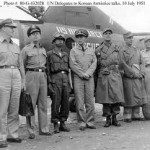

Even with a means to negotiation, limited wars rarely bring the irrevocable conclusion that total or unlimited wars do – battles like Goa are few and far between. Despite adhering to the tenets in the Six-Day War, Israel has since engaged in numerous major and minor wars. Even the Falklands, beloved by exponents of limited war, is not settled in the minds of the Argentinian body politic.[47] Here, financial market methods of profit-stops and stop-losses provide a guide for limited war.[48]
A profit-stop is a pre-agreed limit of success at which point a trading firm will liquidate its shares and take a profit rather than gamble on possible further gains. Bush’s resistance of calls to ‘finish the war’ by pursuing the Iraqi Army into Iraq and attempting regime change is a model profit-stop; a predetermined limit of success, strictly adhered to.
A stop-loss is the converse of a profit-stop and perhaps the most difficult element of all to implement. Nations, like financial institutions, have poor risk assessment abilities.[49] There are few instances of rational state actors determining their tolerance for failure before a war and resisting the temptation to reinforce failure during one. Finally, the successful conduct of limited war requires that these tenets be incorporated into military training and operational plans.
Sounds good in theory..
After the failure of Operation Parakram, the Indian Army revolutionised its planning and structure under its ‘Cold Start’ doctrine.[50] India would now leverage the factors that had undermined Parakram, by applying the tenets of limited war.
The military objectives of Cold Start are specific and limited:
– control of specific territories in the border region;
– destruction of terrorist facilities;
– concessions from Pakistan.[51]
These objectives have been made clear to Pakistan and, when combined with limited mobilisation, pose a low threat to the Pakistani state—thus operating below the threshold for a legitimate nuclear response.
Cold Start pre-positions mobile forces at the border capable of deploying within seven days and overwhelming Pakistani opposition.
The plan’s combination of precise intent, definable limits and risk reduction is intended to leverage international pressure, which undermined Parakram, to force Pakistan to seek resolution. Western militaries however, remain focused on limited means rather than ends with an emphasis on counterinsurgency; something which has proliferated in Western doctrine in the last decade.
By contrast US doctrine has virtually ignored limited war and only addresses ‘limited interventions’ at the tactical level.[52]
The neglect of limited war theory by Western militaries has not prevented them, and others, from waging and winning it, although success is clearly increased by abiding by the tenets: precision of intent, governing constraints and risk & resolution management. To ensure success in limited war in the future will require militaries to study its theory and practice and incorporate the tenets in military doctrine and plans.
Reinvigorating limited war may challenge conventional Western military wisdom, such as the need for broad coalitions, how military force is employed or the desire for the UN’s imprimatur. It may also challenge the dominance of the counterinsurgency meme as George Friedman believes. However a failure to consider limited war as a viable strategic choice may lead to the worst possible alternative, ‘another decade of waging war for unlimited objectives with limited means’.[53]
Bibliography
Asharaf, Tariq. M. “Doctrinal Reawakening of the Indian Armed Forces.” Military Review, Vol 84. No. 6 Nov/Dec 2004: 49-58.
Asian Wall Street Journal. “Limited War, Limited Results.” Asian Wall Street Journal, 22 July 1999: 10-11.
Barberis, Nicholas. Huang, Ming and Santos, Tano. “Prospect Theory.” Quarterly Journal of Economics, Vol 116, Issue 1, 2001: 1-53.
Boot, Max. The Savage Wars of Peace: Small Wars and the Rise of American Power. New York: Basic Books, 2003.
Brahimi, Lakhdar. Report of the Panel on United Nations Peacekeeping. New York: United Nations Secretariat, 2000.
Calwell, C. E. Small Wars: Their Principles and Practise. New Jersey: Rowman & Littlefield 1976 reprint, 1906.
Cannon, Michael. W. The Development of the American Theory of Limited War, 1945-63. Monograph, Fort Leavenworth: US Army Command and General Staff College, 2008.
Carr, P. Jarrow and R. “The stop-loss start-gain paradox and option valuation: a new decomposition into intrinsic and time value.” Review of Financial Studies, Volume 3, Issue 2 1990: 469-492.
Chandran, D Suba. “An Inquiry into Limited War – The Theory.” Institute of PEace and Conflict Studies, 15 July 2002: Online Edition.
Clark, Ian. Waging War: A Philosophical Introduction. Oxford: OUP, 1988.
Clinton, Bill. “Transcript: Interview at the World Economic Forum in Davos.” World Economic Forum. Davos: The Clinton Foundation, 13 March 2012.
David E. Johnson, Karl P. Mueller, William H. Taft. Conventional Coercion Across the Spectrum of Operations: The Utility of U.S. Military Forces in the Emerging Security Environment. Monograph, Online Edition: RAND Corporation, 2003.
Desch, Michael. “Democracy and Victory: Why regime type hardly matters.” International Security, 27 (2) 2002: 5-47.
Dulles, John Foster. “The Evolution of Foreign Policy. Speech, Washington: Department of State, Press Release No. 81. Archived from the original on 1998 – 2011 Nuclear Age Peace Foundation, 12 Janurary 1954.
Echevarria, Antulio. J. Toward An American Way of War. Carlisle: Strategic Studies Institute, 2004.
Elkus, Adam. “Red Team Journal.” The Shadow of Limited War, 15 July 2010: online edition.
Elkus, Adam. “The Strategic and Operational Dynamics of Limited War.” Small Wars Journal, 17 April 2012: Online Edition.
Fair, Christine. “Militant Recruitment in Pakistan: Implications for Al Qaeda and Other Organisations.” Studies in Conflict and Terrorism, Vol 27, No 6 (November 2004): 489-504.
Farrokh, Kaveh. Iran at War: 1500–1988. . Oxford: Osprey Publishing, 2011.
Friedman, George. “The End of Counterinsurgency and the Scalable Force.” Stratfor Global Intelligence . 05 June 2012. http://www.stratfor.com/weekly/end-counterinsurgency-and-scalable-force (accessed May 01, 2013).
Hanson, Victor Davis. “Tomorrow’s Wars.” City Journal, Winter 2010: online edition.
Harrington, Daniel F. Berlin on the Brink: The Blockade, the Airlift, and the Early Cold War . Lexington: University of Kentucky Press, 2012.
Hart, Basil Liddel. Strategy: The Indirect Approach (3rd Edition). New York: Plume, 1954 (reprinted 1991).
Howard, Michael. Clausewitz. Oxford: OUP, 1983.
Hurst, James. W. Pancho Villa and Black Jack Pershing: The Punitive Expedition in Mexico . Praeger, 2007.
Intriligator, Linda J. Bilmes and Michael D. “How Many Wars Is the US Fighting Today? .” Peace Economics, Peace Science and Public Policy, 03 May 2013: 8-16.
Karsh, Efraim. The Iran-Iraq War: 1980-1988. New York: Osprey Publishing, 2002.
Karsh, Lawrence Freedman and Efraim. The Gulf Conflict 1990 – 91. NJ: Princeton University Press, 1993.
Keating, Joshua. “How many wars is the US fighting right now?” Foreign Policy, 03 May 2013: online edition.
Keegan, John. A Hsitory of Warfare. Oxford: OUP, 1993.
Kissinger, Henry. Nuclear weapons and foreign policy. New York: Harper and Brothers for the or the Council on Foreign Relations, 1957.
LaFeber, Walter. “The Rise and Fall of Colin Powell.” Political Science Quarterly. Vol. 124, No. 1 , March, 2009: 71-93.
Lewis, Adrian R. The American Culture of War: A History of US Military Force From World War II to Operation Iraqi Freedom. New York: Routledge, 2012.
Ludwig, Walter. C. “A Cold Start for Hot Wars? The Indian Army’s New Limited War Doctrine.” International Security , Vol 32, No. 3 (Winter 2007/08): 158-190.
Mack, Andrew. “Why Big Nations Lose Small Wars: The Politics of Asymetric Conflict.” World Politics, 27 (2) 1975: 175-200.
Malkasian, Carter. The Korean War. Oxford: Osprey Publishing, 2001.
McElroy, Damien. “Argentina demands UN reject Falkland Islands referendum.” The Telegraph, 25 March 2013.
Miniter, Richard. Losing Bin Laden: how Bill Clinton’s Failures Unleashed Global Terror. Washington DC: Regnery, 2003.
Musharraf, Pervez. “Musharraf declares war on extremism.” BBC World News. 12 Janurary 2002. http://news.bbc.co.uk/2/hi/south_asia/1756965.stm (accessed May 28, 2013).
Nalls, John Carl. Resurrecting Limited War Theory. Monograph, Fort Leavenworth: School of Advanced Military Studies, 09 April 2008.
National War College. The American Approach to Limited War. Core Course Essay, Washington, DC: National War College, 1994.
Nicholas Barberis, Ming Huang and Tano Santos. “Prospect Theory.” Quarterly Journal of Economics, Vol 116, Issue 1, 2001: 1-53.
Osgood, Robert Endicott. Limited war: the challenge to American strategy. Chicago: University of Chicago Press, 1957.
Pape, Robert A. Bombing to Win: Air Power and Coercion in War . Ithaca, N.Y: Cornell University Press, 1996.
Rosen, Stephen Peter. “Vietnam and the American Theory of Limited War.” International Security, Autumn 1982: 83-113.
Schelling, Thomas. C. The Strategy of Conflict. Boston : Harvard University Press, 1980.
Shlaim, Avi. The Iron Wall: Israel and the Arab World. New York: W. W. Norton & Company, 2001.
Sigler, John H. “The Iran-Iraq Conflict: The Tragedy of Limited Conventional War.” International Journal, Vol 41, No 2, Southwest Asia (Spring), 1986: 424-456.
Sood, Pravin Sawhney and V.K. Operation Parakram: The War Unfinished. New Dheli: Sage, 2003.
Steward, Hal. “A Public Relations Plan for the US Military in the Middle East.” Public Relations Quarterly, Winter 1990-91: 10.
Stokesbury, James. L. A Short History of the Korean War. New York: Harper Perennial, 1990.
Sullivan, Patricia. L. “War Aims and War Outcomes: Why Powerful States Lose Limited Wars.” The Journal of Conflict Resolution, Vol 51, No. 3 (June 2007): 496-524.
Taylor, Dick Cheney and Bill. Professional Military Education: An Asset for Peace and Progress . Washington, D.C: Center for Strategic & International Studies, 1997.
Taylor, Maxwell. The Uncertain Trumpet. New York: Harper and Brothers, 1960.
The Center for Media and Democracy. “How PR Sold the War in the Persian Gulf.” PR Watch. n.d. http://www.prwatch.org/books/tsigfy10.html (accessed May 25, 2013).
The stop-loss start-gain paradox and option valuation: a new decomposition into intrinsic and time valueReview of Financial StudiesVolume 3, Issue 2 1990469-492
Thomas. W. Jacobson. U.N. Peacekeeping: Few Successes, Many Failures, Inherent Flaws. Washington: International Diplomacy & Public Policy Center, LLC, 2012.
U.S. Department of Defense. U.S. Army Field Manual 3-0,Operations. Washington DC: Government Printing Office, 2008.
US Department of Defence. The Pentagon Papers Volume 2. Boston: Gravel , 1962.
Waxman, Daniel Byman and Matthew. “Defeating US Coercion.” Survival, Journal of the International Institute for Strategic Studies, Vol 41, No.2 Summer 1999: 107-120.
Weigley, Russell. The American Way of War: A History of United States Military Strategy and Policy. New York : Macmillan Publishing, 1973.
Wilson, Ben. The Evolution of Iranian Warfighting During the Iran-Iraq War: When Dismounted Light Infantry Made the Difference. Washington, D.C.: U.S. Army: Foreign Military Studies Office, July–August 2007 .
Zhang, Xiaoming. “China’s 1979 War With Vietnam: A Reassessment.” The China Quarterly, 2005: 851-874.
[1] This is the view of many practitioners, who have resisted its constraints since it was first proposed during the Cold War (see LaFeber 2009). A more correct rendering than un-American would be non-American, i.e., not reflective of the American way of war described by Weigley (1973).
[2] Massive retaliation or massive response was a policy of the Eisenhower administration in response to the advent of nuclear weapons and in the face of the Cold War. The policy pre-empted mutually assured destruction (MAD) and reserved the right of the US to employ nuclear weapons in response to an act of aggression. The policy was revealed as flawed in the wake of the Korean War, where nuclear nullity existed between the superpowers, i.e., a threshold of conflict below which nuclear weapons would not be employed. The administration’s policy had de-prioritised conventional conflict as an agent of policy, something that many strategists felt led to the unsatisfactory conclusion to the Korean War. The policy was first articulated in public by Secretary of State John Foster Dulles in a speech (see Dulles 1954).
[3] Both Kissinger and Osgood, working at Harvard University and Johns Hopkins University, respectively, coined the term ‘limited war’ concurrently and seperately to describe their solutions to nuclear nullity (Kissinger 1957; Osgood 1957).
[4] For an exploration of limited war as culture, see Keegan (1993).
[5] Howard, Clausewitz, 34.
[6] Corbett, Maritime Strategy, 77–78. Liddell-Hart was attempting to explain the success of British strategy in managing a quarter of the globe as colonial dominion and to characterise Britain’s recent involvement in the First World War as aberrant and undesirable. See Liddell-Hart (1991).
[7] Nalls, Resurrecting, 4. Total war is not the converse of limited war. A small war that does not involve the mobilisation of one or more belligerents (thus not a total war) can still be an unlimited war, i.e., a conflict where only the complete defeat of the other party is acceptable.
[8] Harrington (2012). and Osgood (1957, 40–42) outlines.
[9] Elkus, Strategic and Operational Dynamics. The Vietnam War is often cited by critics as an example of the weaknesses in limited war theory. It presents a highly problematic case study because it is not clear that Vietnam was a limited war. The central strategists did not think they were waging a limited war. See McGeorge Bundy’s August 1962 memorandum in The Pentagon Papers, vol. 2 (Boston: Gravel Edition), 689. The fundamental problem in characterising counterinsurgencies as limited wars is that, while they may have geographic and military limits, their objectives are inherently unlimited, i.e., an implacable opposition to a particular faction’s political ends. Therefore, they fail to meet the canonical definition of limited war.
[10] The three limitations with which Robert Osgood (1957, 4) defined limited war were objectives, geography and means of conduct. Ian Clark (1988) added weapons employed and targets of hostility, but these are essentially both components of limiting the method or the conduct of war.
[11] Since the Vietnam War, there has been limited thinking about limited war in the West, with the exception of Schelling (1980). Outside the Western hemisphere, however, there has been far more discussion. See Chandran (2002) and Asharaf (2004) for an exploration of the Indian approach to limited war.
[12] Sullivan limited intervention to the deployment of a minimum of 500 combat troops with the intent to participate in hostile action against either a government or a sub-state group for the purpose of achieving immediate-term political objectives. The definition excludes arms transfers, military training, forward basing, evacuation operations and disaster relief. For an outline of the coding of the explanatory variable of success, see Sullivan (2007, 510).
[13] India was not a member of the UN Security Council during the annexation of Goa, but was a member at the conclusion of the Bangladesh conflict.
[14] Operation Opera (see also Operation Babylon) sawIsrael destroy Iraqi nuclear facilities nearBaghdad before they were constructed. Israel was widely condemned for the attack. Hhowever, US President Bill Clinton later acknowledged that it likely set Iraqi nuclear weapons programs back 10 years. See Clinton (2012).
[15] In a comprehensive survey of peace operations since the foundation of the UN, the UN found very few successes and a very large number of failures (Brahimi 2000). See also Jacobson (2012).
[16] The mobile phase of the Korean War, which concluded with forces along what approximates the current border, ran from June 25, 1950, with North Korean intrusion into the South, until July 10, 1951, when armistice negotiations officially began. Fighting continued for two more years and a technical state of war exists today. See Stokesbury (1990, 175–177).
[17] This is particularly true for cases of US intervention. See Waxman (1999).
[18] Coercion has often been divided into deterrence and compellence attempts to make the target change its behaviour in accordance with the coercer’s demands, e.g., to halt an invasion, to withdraw from disputed territory or to surrender. Hence, deterrence is future focused, whereas coercion is largely retroactive. See David E. Johnson, Conventional Coercion across the Spectrum of Operations: The Utility of U.S. Military Forces in the Emerging Security Environment (2003), Chapter 2, for RAND’s position. For the use and origin of ‘compellence’, see Pape (1996, 80) or Schelling (1980), Chapter 3.
[19] The phrase ‘why die for a tie’ was a popular slogan among anti-war activists. See Malkasian (2001, 71).
[20] See Steward (1990–1991) and The Center for Media and Democracy (n.d.).
[21] Prior to Operation Desert Storm, Saddam Hussein told US Ambassador April Glaspie that the US would not act because they ‘cannot accept 10,000 dead in one battle’ (Karsh 1993, 276).
[22] See Cheney (1997).
[23] Commentators have suggested various options considered by Hussein, including urban combat (centred on Kuwait City) or chemical and other ‘dirty’ weapons.
[24] The war was concluded with a quad-partite ceasefire on the sixth day of combat, June 10, 1967, and affirmed by UN Security Council Resolution 242, ‘Land For Peace’, on November 11 of that year (Shlaim 2001, 254).
[25] The weapons and methods used to wage war are clearly also limitations that need to be considered. However, unlike the other elements on this list, these limitations are far from immutable; combatants can, and usually do, relax them in response to military circumstance. Hence, the considerations of limiting targeting and the destruction in war is addressed in the third tenet, ‘risk and resolution management’.
[26] Prior to independence, Bangladesh was known as East Pakistan. Pakistani Air Force’s Operation Chengiz Khan was a partially successful attempt to destroy 11 Indian air bases including Agra, 450 km inside Indian territory, as well as ground-based radars in Amritsar and Faridkot.
[27] The USA and PRC were strong supporters of Pakistan, whereas the USSR aligned with India.
[28] India did undertake a semi-blockade against naval vessels in the port of Karachi in Operation Python.
[29] Pakistan launched a number of poorly synchronised brigade-sized armoured thrusts across the western border in an attempt to force India to expand the war (Sood 2003).
[30] The term is used by Pakistani Air Force Officer Ashraf to describe India’s conventional strategy circa 1981–
2004 and refers to General Krishnaswamy Sundarrajan (Asharaf 2004).
[31] The majority of Indian strategists believe that Pakistan security services have control over the Kashmiri militants. See Fair (2004).
[32] Sood, Operation Parakram, __.
[33] The US was particularly concerned because it was relying on Pakistani consent and support in the war in Afghanistan, which had commenced just weeks earlier.
[34] BBC World News, Janurary 12, 2002.
[35] The term ‘First Persian Gulf War’ is preferred by Arabic and Iranian scholars. See Farrokh (2011).
[36] Shatt al-Arab (referred to as the Arvand Roud in Iran) is the Iraqi title for approximately 100 km2 of riverine land that controlled a number of rich oil fields (Farrokh 2011, 17).
[37]Russia had recently invadedAfghanistan and theUS was still traumatised byVietnam. Moreover, neither side had a natural affinity with either superpower. The US had recently suffered a humiliating experience with the siege of its embassy in Tehran and the debacle of Desert One, while Iran was morally supporting the Mujahideen in Afghanistan against Soviet forces. Likewise, the US had a troubled relationship with the Baathist regime in Baghdad, as did the USSR.
[38] While long-range missiles were employed against civilian targets, the so-called ‘scud duel’ was limited to border towns because of the limitations of the weapon system (Karsh 2002, 212).
[39] It appears that Hussein was influenced by Anwar Sadat’s strategy in the 1973 Yom Kippur War. Rather than launch an all-out assault on Israel, Egypt employed a ‘bite and hold’ strategy utilising the cover of a Soviet-supplied surface-to-air-missile umbrella to neutralise Israeli air strikes with the limited war intent of using the ground gained to enhance negotiations. Egypt’s strategy failed for a number of reasons: Israel’s technological superiority, Sadat’s overreach in ordering his military to move beyond the range of his air defence and Israel’s direct military aid from a superpower. In 1980, it was Iraq that had technological superiority and major power support (from the other Gulf states). Hussein’s use of force and lack of national mobilisation also indicate that he had no ulterior or subsequent objectives.
[40] The Iranian decision to push intoIraq was not unanimously supported by Iranian high command. The decision was ultimately made by the Ayatollah Khomeini against the wishes of the mmilitary,.see Karsh (2002, 79–82).
[41] Wilson, Evolution of Iranian Warfighting.
[42] Stokesbury, Korean War, 144–153.
[43] Even the site of the armistice negotiations remained contentious because of Chinese suspicions that they were conducted in the middle of the combat area, first at Kaesong, then at Panmunjom (Stokesbury 1990, 147).
[44] “Limited War, Limited Results,” 10–11; Waxman, Defeating US Coercion, 107–120.
[45] (Asian Wall Street Journal 22 July 1999) (Waxman Vol 41, No.2 Summer 1999)
[46] (Nalls 09 April 2008) p 40-41
[47] McElroy, “Argentina Demands.”
[48] Carr, “The Stop-Loss Start-Gain,” 469–492.
[49] Barberis,Prospect Risk , (2001). 41
[50] Sood, Operation Parakram.
[51] Ludwig, Cold Start For Hot Wars, 32, no. 3 (2007/08), 164.
[52] U.S. Department of Defense, U.S. Army Field Manual, 2–7.
[53] Elkus, Strategic and Operational Dynamics.

